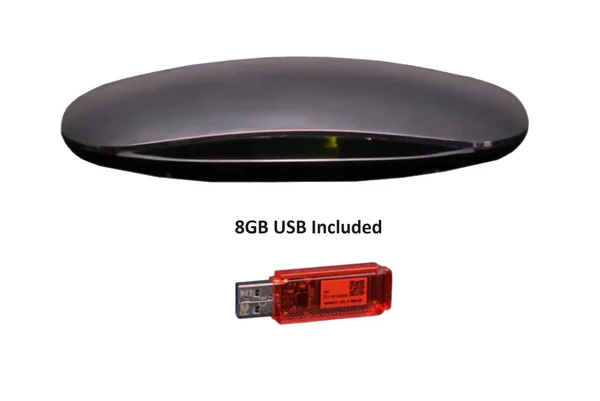I. Introduction
A. Importance of Data Security in the Digital Age
In an increasingly digital and interconnected world, data security is paramount. With the rise of cyber threats, businesses face unprecedented risks to their sensitive information, including customer data, intellectual property, and financial records. Protecting this data not only safeguards business operations but also maintains trust and confidence among stakeholders, including customers and partners.
B. Overview of ISO 27001 as a Global Standard for Information Security Management
ISO 27001 stands as a cornerstone in the field of information security management. Developed to address the growing need for a systematic approach to managing information security risks, ISO 27001 provides a framework that helps organizations establish, implement, maintain, and continually improve an Information Security Management System (ISMS). This standard is recognized globally and serves as a benchmark for demonstrating an organization’s commitment to securing its information assets against potential threats.
II. What is ISO 27001?
A. Definition and Objectives of ISO 27001
ISO 27001 is an internationally recognized standard that provides a framework for establishing, implementing, maintaining, and continually improving an Information Security Management System (ISMS). The main objectives of ISO 27001 are:
- Information Security: Ensuring the confidentiality, integrity, and availability of information assets within an organization.
- Risk Management: Identifying, assessing, and mitigating information security risks effectively to protect against potential threats and vulnerabilities.
- Compliance: Ensuring compliance with legal, regulatory, and contractual requirements related to information security.
- Continuous Improvement: Establishing a systematic approach to monitor, review, and enhance the ISMS to adapt to changes in technology, threats, and business environments.
B. Scope and Applicability Across Industries
ISO 27001 is applicable to organizations across various industries and sectors, including:
- IT and Technology: Software development, IT services, cybersecurity firms, cloud service providers.
- Finance and Banking: Banks, financial institutions, insurance companies dealing with sensitive financial information.
- Healthcare: Hospitals, clinics, healthcare providers managing patient records and sensitive medical information.
- Government and Public Sector: Government agencies, ministries, defense organizations handling classified information and citizen data.
- Manufacturing and Retail: Manufacturing firms protecting intellectual property, retail businesses safeguarding customer data.
III. Key Components of ISO 27001
A. Risk Assessment and Management in ISO 27001
In ISO 27001, risk assessment and management are core processes aimed at identifying, analyzing, and mitigating information security risks. It begins with identifying threats and vulnerabilities to information assets. Risks are evaluated based on severity and likelihood, considering legal and business requirements. Strategies are developed to mitigate risks through security controls. Continuous monitoring ensures the effectiveness of these measures over time.
B. Implementing an Information Security Management System (ISMS)
Implementing an ISMS under ISO 27001 involves establishing a structured framework to manage and protect information assets. This includes defining security policies, objectives, and targets aligned with organizational goals. A risk treatment plan outlines security controls to mitigate identified risks. Documented information supports the consistency and traceability of security activities. Monitoring performance ensures compliance and effectiveness. Internal audits and reviews identify improvement opportunities and enhance overall security practices.
IV. Benefits of ISO 27001 Certification
A. Enhanced Data Protection and Confidentiality
ISO 27001 certification strengthens data protection by implementing robust security controls that safeguard confidentiality, integrity, and availability of information assets. It ensures that sensitive data is adequately protected against unauthorized access, breaches, or cyber threats.
B. Compliance with Legal and Regulatory Requirements
Achieving ISO 27001 certification demonstrates adherence to international best practices and legal requirements concerning information security. It helps organizations navigate complex regulatory landscapes, ensuring they meet data protection regulations and contractual obligations.
C. Improved Business Resilience and Continuity Planning
ISO 27001 promotes business resilience by fostering a proactive approach to risk management. It enables organizations to identify potential threats, assess their impact, and implement measures to mitigate risks effectively. This proactive stance enhances organizational readiness to manage disruptions and ensures continuity of operations during unforeseen events.
V. Steps to Achieve ISO 27001 Certification
A. Initial Assessment and Gap Analysis
Begin by conducting an initial assessment to evaluate your current information security practices against the requirements of ISO 27001. Identify gaps where your current practices fall short of the standard’s requirements.
B. Developing and Implementing ISMS Controls
Develop a comprehensive Information Security Management System (ISMS) that addresses the identified gaps. Implement necessary security controls and measures to mitigate risks and strengthen your organization’s information security posture.
C. Conducting Internal Audits and Management Reviews
Regularly conduct internal audits to assess the effectiveness of your ISMS and ensure compliance with ISO 27001 requirements. Management reviews should be conducted to evaluate the performance of the ISMS, identify opportunities for improvement, and ensure alignment with organizational goals.
D. External Audit by a Certification Body
Engage an accredited certification body to conduct an external audit of your ISMS. The certification body will assess whether your ISMS meets all requirements of ISO 27001. This audit includes reviewing documentation, conducting interviews, and assessing the implementation and effectiveness of ISMS controls.
E. Achieving Certification and Maintaining Compliance
Upon successful completion of the external audit, your organization will achieve ISO 27001 certification. Maintain compliance by continuously monitoring the effectiveness of your ISMS, addressing non-conformities, and adapting to changes in information security risks, technologies, and regulatory requirements. Periodic surveillance audits by the certification body will verify ongoing compliance and ensure the continued effectiveness of your ISMS.
VI. Maintaining ISO 27001 Certification
A. Continuous Improvement of ISMS
Continuously improve your Information Security Management System (ISMS) by regularly reviewing and updating security controls, policies, and procedures. Conduct internal audits and management reviews to identify areas for enhancement and ensure the ISMS remains effective in addressing current and evolving information security risks.
B. Training and Awareness Programs for Employees
Implement comprehensive training and awareness programs to educate employees about information security policies, procedures, and their roles in maintaining the security of organizational assets. Foster a security-conscious culture where employees understand the importance of information security and are vigilant against potential threats.
C. Adapting to Emerging Threats and Technological Advancements
Stay vigilant and proactive in identifying emerging threats and technological advancements that could impact your organization’s information security. Regularly assess and update your ISMS to incorporate new security measures, technologies, and best practices to mitigate evolving risks effectively.
VII. Overcoming Challenges in ISO 27001 Certification
A. Common Challenges in Implementation
Implementing ISO 27001 certification can present various challenges for organizations:
- Resource Constraints: Limited budget, expertise, or dedicated personnel can hinder the effective implementation of an ISMS.
- Complexity of Requirements: Understanding and interpreting the detailed requirements of ISO 27001 and applying them effectively to organizational processes.
- Organizational Resistance: Overcoming resistance to change and obtaining buy-in from stakeholders across different departments and levels.
- Integration with Existing Processes: Aligning the ISMS implementation with existing business processes, IT systems, and other management systems (e.g., quality management).
B. Strategies to Overcome Obstacles and Ensure Success
To successfully navigate these challenges and achieve ISO 27001 certification:
- Executive Sponsorship: Secure commitment and active support from senior management to allocate necessary resources and prioritize information security initiatives.
- Education and Training: Provide comprehensive training and awareness programs to educate employees about the importance of information security and their roles in maintaining ISMS compliance.
- Clear Communication: Communicate the benefits of ISO 27001 certification throughout the organization to build understanding and support.
- Risk-Based Approach: Adopt a risk-based approach to prioritize implementation efforts based on the organization’s specific risks and vulnerabilities.
- Engagement of Stakeholders: Involve stakeholders from different departments and levels in the development and implementation of the ISMS to foster ownership and cooperation.
VIII. Conclusion
A. Recap of the Importance of ISO 27001 Certification for Data Security
ISO 27001 certification plays a crucial role in enhancing data security by providing organizations with a structured framework to manage and protect their information assets effectively. It ensures that sensitive data remains confidential, maintains its integrity, and is available when needed, thereby safeguarding against potential threats and vulnerabilities.
B. Encouragement for Organizations to Prioritize Information Security
It is essential for organizations to prioritize information security as a strategic imperative. Implementing ISO 27001 not only demonstrates a commitment to protecting valuable information assets but also strengthens organizational resilience against cyber threats and regulatory compliance challenges. By investing in robust information security practices, organizations can build trust among stakeholders and gain a competitive edge in the marketplace.




